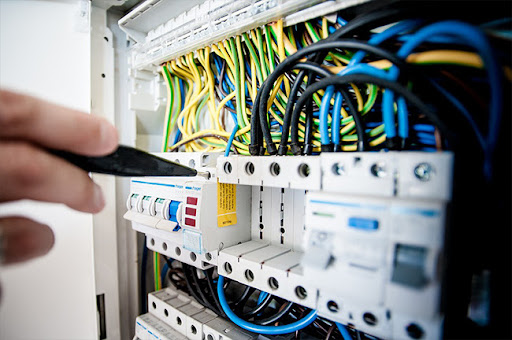In distributed solar applications, small PV systems (5–25 kilowatts [kW]) generate power for on-web website consumption and interconnect with low-voltage transformers on the electrical application device. Deploying allotted PV can reduce transmission line losses, increase grid resilience, keep away from generation costs, and decrease necessities to put money into new application generation capacity. With the right equipment and calibration, allotted PV systems also can mitigate reliability problems skilled by presenting standby ability all through electric powered application disturbances or outages. To solve the electric-powered problem search Electrical repairs in Dubai for more information.
Operational Considerations
In maximum electric-powered application systems, electricity flows in a single direction: from centralized generators to substations, to end-use consumers. With distributed generation (DG), electricity can float in each direction. Most electric-powered distribution structures aren’t designed to house widespread DG and a two-way flow of electricity. Common demanding situations consist of maintaining required voltage levels within regulated limits, coordinating protection system devices, and dealing with extra cycling—and related put on and tear—of the voltage control system, in particular, crucial for longer distribution feeder circuits in rural areas.
Planning Considerations
Traditional distribution and transmission making plans do not effectively deal with the advantages and demanding situations of DG systems. Traditional distribution-making planning procedures use load growth to tell investments in new distribution infrastructure, with little regard for DG systems and for PV deployment.
Addressing Operational Challenges
Review and replace interconnection requirements and grid codes to actually define the interconnection necessities for allotted solar generators and make sure that their running parameters support reliability withinside the distribution system. For example:
Require use of PV inverters with superior capabilities consisting of fault ride-thru, reactive electricity support, and voltage control to assist keep the grid’s frequency and voltage levels inside utility requirements
Require distributed PV equipment that may remotely and selectively curtail system output while generation notably exceeds call for on the substation level
Require the use of commercially available battery inverters to enable off-grid operation of PV systems all through grid outages.
In conjunction with interconnection standards, increase or update equipment standards to define the parameters that distributed PV components (e.g., inverters, converters, and controllers) have to meet which will contribute to reliability. Equipment standards can lay the foundation for testing, certification, and labeling programs for PV components that help interconnection standards.
Review and replace interconnection methods to create a standard and transparent process for interconnecting distributed PV in a way that balances the dreams of growing deployment with minimizing destructive influences to the distribution device. For example:
Replace ‘first-come, first-served interonnection processes with a transparent procedure based on device impacts
Require PV inverters to conform with interconnection and equipment requirements to permit interconnection screening methods to be accomplished quickly
Establish technical screens that consider influences consisting of unintentional islanding (because of excessive electricity production all through mild feeder load), the high voltage on the region of the era, potential for temporary overvoltage occurrences, and influences at the safety device coordination.
Improving System and Distribution Planning
Incorporate distributed PV into incorporated useful resource making plans and modeling of device capacity expansion to optimize the quantity of allotted PV at the device withinside the future.
Consider making plans for better PV penetration in targeted regions—described through regulatory standards or created thru targeted grid reinforcements and improvements. These regions may be diagnosed through utilities thru a procedure administered through a regulatory frame that considers stakeholder desires and is based on sound engineering principles.
Evaluate emerging methods to distribution system making plans (e.g., Integrated Distribution Planning), which proactively assesses the hosting ability of distribution circuits, the ability of those distribution circuits to house growth in the distributed era, and any important infrastructure upgrades in advance of receiving interconnection requests from generators.
Evaluate pricing mechanisms and rate designs and replace them as needed to reflect the device-wide advantages and prices of distributed PV integration (e.g., through imposing Value of Solar tariffs).
Collect information at the load profile of distribution circuits (feeders) which will determine hosting ability and infrastructure needs.
At the transmission level, encourage device flexibility(e.g., thru using generators that may change output quickly) to house high levels of the variable era from distributed PV. To know more information about distribution planning search Electrical upgrades Dubai.
Final Thoughts
By producing electricity in smaller quantities towards end-users, we will dramatically boom electricity efficiency, reduce carbon pollution, enhance grid resiliency, and curtail the need for new transmission investments.
Distributed generation (additionally referred to as on-site generation or decentralized generation) is a time period describing the generation of power to be used on-site, instead of transmitting electricity over the electrical grid from a large, centralized facility (consisting of a coal-fired electricity plant). As financial improvement outpaces the enlargement of power delivery in a few regions of the country, and with different areas dealing with constraints at the ability to supply the electricity in which and while it is needed, it is critical to inspire local options for power transmission.DEWA Approved electrical Contractors offer professional electrical services for effective electric generation and distribution.











